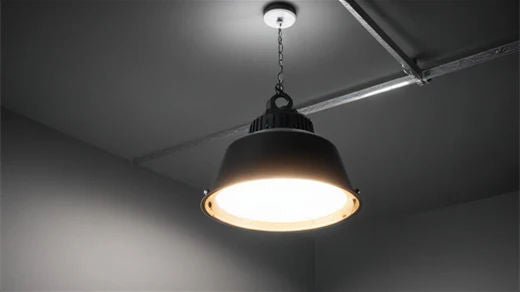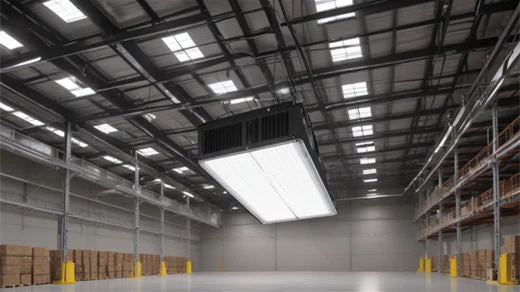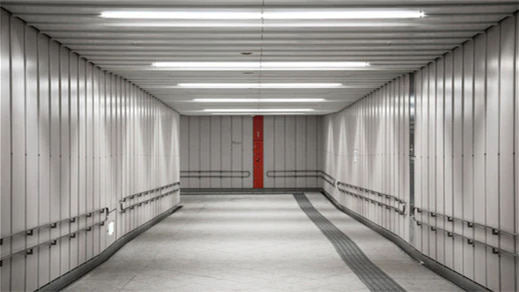Choosing the appropriate lighting for your space is crucial for ensuring optimal illumination, safety, and energy efficiency. Two common types of lighting used in various settings are low bay LED lights and high bay lighting. Each type of lighting has specific characteristics, applications, and advantages that make them suitable for different environments. In this comprehensive guide, we will explore the key differences between low bay LED lights and high bay lighting to help you make an informed decision for your lighting needs.
Understanding Low Bay LED Lights
What are Low Bay LED Lights?
Low bay LED lights are designed for use in spaces with lower ceilings, typically ranging from 12 to 20 feet. These fixtures provide sufficient illumination for smaller areas and are often used in commercial and industrial settings where the ceiling height does not warrant the use of high bay lighting.
Characteristics of Low Bay LED Lights
- Lower Mounting Height: Suitable for ceilings between 12 and 20 feet, making them ideal for smaller indoor spaces.
- Wide Beam Angle: Designed to distribute light evenly across a smaller area, ensuring uniform illumination.
- High Lumen Output: Despite their smaller size, low bay LED lights produce a significant amount of light, making them efficient for lower ceiling applications.
- Energy Efficiency: LED technology ensures that low bay lights consume less energy while providing high-quality illumination.
Advantages of Low Bay LED Lights
- Energy Efficiency: LED technology offers substantial energy savings compared to traditional lighting options like fluorescent or incandescent lights.
- Enhanced Visibility: The high lumen output and wide beam angle ensure excellent visibility, which is crucial for safety and productivity in commercial and industrial settings.
- Longevity: LED low bay lights have a longer lifespan, reducing the frequency and cost of replacements.
- Cost Savings: The energy efficiency and longevity of low bay LED lights lead to significant cost savings over time.
Applications of Low Bay LED Lights
- Retail Stores: Providing bright and uniform lighting in smaller retail spaces.
- Workshops: Ensuring well-lit work areas for various tasks and activities.
- Storage Areas: Illuminating small to medium-sized storage rooms and warehouses.
- Public Buildings: Lighting up areas such as libraries, schools, and community centers.

Understanding High Bay Lighting
What is High Bay Lighting?
High bay lighting is specifically designed for illuminating large indoor spaces with high ceilings, typically ranging from 20 to 45 feet. These fixtures provide bright, uniform light, making them ideal for use in warehouses, factories, gymnasiums, large retail stores, and other commercial or industrial settings.
Characteristics of High Bay Lighting
- Higher Mounting Height: Suitable for ceilings between 20 and 45 feet, making them ideal for large indoor spaces.
- Powerful Lumen Output: High bay lights produce a powerful and focused light output to ensure that even the furthest corners of a large space are well-lit.
- Wide Beam Angle: These lights often feature a wide beam angle to distribute light evenly over a large area.
- Durability: Designed to withstand harsh environments, high bay lights are often constructed with robust materials and have long lifespans.
Advantages of High Bay Lighting
- Energy Efficiency: Modern high bay lights, especially LED variants, consume less energy compared to traditional lighting options like metal halide or fluorescent lights.
- Enhanced Visibility: The high lumen output and wide beam angle ensure excellent visibility, which is crucial for safety and productivity in industrial settings.
- Longevity: LED high bay lights have a significantly longer lifespan, reducing the frequency and cost of replacements.
- Cost Savings: The energy efficiency and longevity of high bay lights lead to substantial cost savings over time.
Applications of High Bay Lighting
- Warehouses and Factories: Providing ample illumination for large storage areas and manufacturing floors.
- Gymnasiums: Ensuring well-lit sports facilities for both participants and spectators.
- Large Retail Stores: Offering bright and uniform lighting in big box stores and supermarkets.
- Airports and Hangars: Illuminating large indoor spaces where precise visibility is essential.

Key Differences Between Low Bay LED Lights and High Bay Lighting
Mounting Height
One of the most significant differences between low bay LED lights and high bay lighting is the mounting height. Low bay LED lights are designed for ceilings between 12 and 20 feet, making them suitable for smaller spaces. In contrast, high bay lighting is intended for higher ceilings, typically ranging from 20 to 45 feet. This distinction is crucial because the mounting height affects the light distribution and intensity required to adequately illuminate the space.
Beam Angle
Low bay LED lights generally have a wider beam angle to ensure uniform illumination across a smaller area. This wide beam angle helps to distribute light evenly, reducing shadows and dark spots. High bay lights, on the other hand, often have a narrower beam angle but produce a more intense light output. This design is essential for ensuring that light reaches the floor and other areas in spaces with high ceilings.
Lumen Output
While both low bay LED lights and high bay lighting are designed to provide sufficient illumination, high bay lights typically have a higher lumen output. This higher output is necessary to adequately light up large spaces with high ceilings. Low bay LED lights, although powerful, are designed for smaller areas and therefore have a lower lumen output compared to high bay lights.
Applications
The applications of low bay LED lights and high bay lighting differ due to their design and intended use. Low bay LED lights are ideal for smaller spaces such as retail stores, workshops, and public buildings. They provide adequate illumination for areas with lower ceilings. High bay lighting is better suited for larger indoor spaces with high ceilings, such as warehouses, factories, and gymnasiums, where a powerful and focused light output is needed to ensure visibility.
Energy Efficiency
Both low bay LED lights and high bay lighting are available in energy-efficient LED options. However, the energy consumption may vary depending on the specific requirements of the space. High bay lights, due to their higher lumen output, may consume more energy than low bay LED lights. Nevertheless, LED technology ensures that both types of lighting are more energy-efficient compared to traditional lighting options, leading to long-term cost savings.
Installation and Maintenance
The installation and maintenance of low bay LED lights and high bay lighting also differ. Low bay LED lights are easier to install and maintain due to their lower mounting height. High bay lights, mounted at greater heights, may require specialized equipment and more effort for installation and maintenance. However, the longer lifespan of LED high bay lights reduces the frequency of maintenance and replacements.
Choosing the Right Lighting
To determine whether low bay LED lights or high bay lighting are the best choice for your needs, consider the following factors:
- Ceiling Height: Measure the height of your ceiling to determine whether low bay or high bay lighting is appropriate. Low bay LED lights are suitable for ceilings between 12 and 20 feet, while high bay lighting is ideal for ceilings between 20 and 45 feet.
- Space Size: Consider the size of the space to be illuminated. Low bay LED lights are designed for smaller areas, while high bay lights are meant for larger spaces.
- Light Distribution: Evaluate the desired light distribution and intensity. Low bay LED lights offer a wide beam angle for uniform illumination, whereas high bay lights provide a more focused and intense light output.
- Energy Efficiency: Both low bay and high bay lights are available in energy-efficient LED options. Consider the long-term cost savings and environmental benefits of LED lighting.
- Application: Identify the specific application and requirements of your space. Low bay LED lights are ideal for smaller indoor areas, while high bay lighting is suitable for large indoor spaces with high ceilings.

Conclusion
Low bay LED lights and high bay lighting each have their unique advantages and are suitable for different applications. Low bay LED lights are the perfect solution for illuminating smaller indoor spaces with lower ceilings, providing energy-efficient, bright, and uniform light. High bay lighting, on the other hand, is ideal for larger indoor spaces with high ceilings, offering powerful and focused illumination.
By understanding the key differences between low bay LED lights and high bay lighting, you can make an informed decision that meets your specific needs. Whether you require efficient lighting for a retail store or a large warehouse, choosing the right type of lighting will enhance visibility, safety, and overall functionality of the space.


































Leave a comment
This site is protected by hCaptcha and the hCaptcha Privacy Policy and Terms of Service apply.